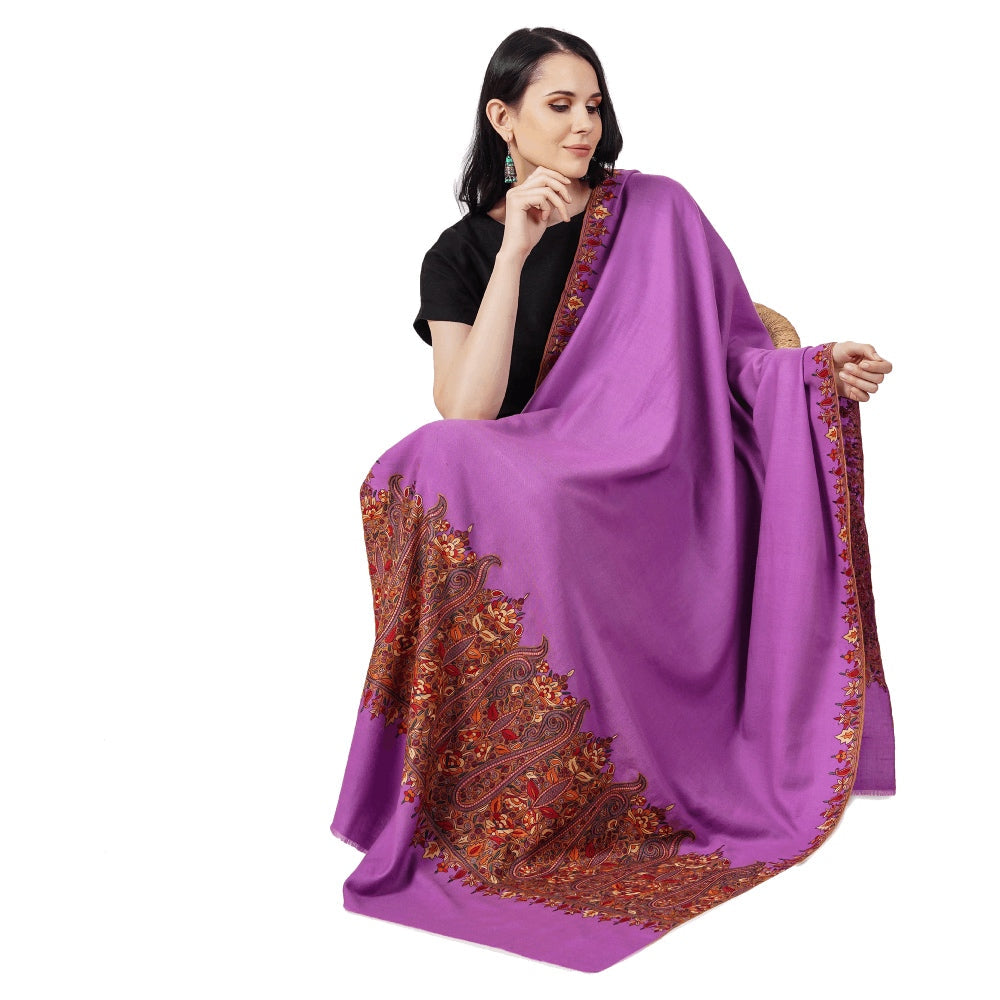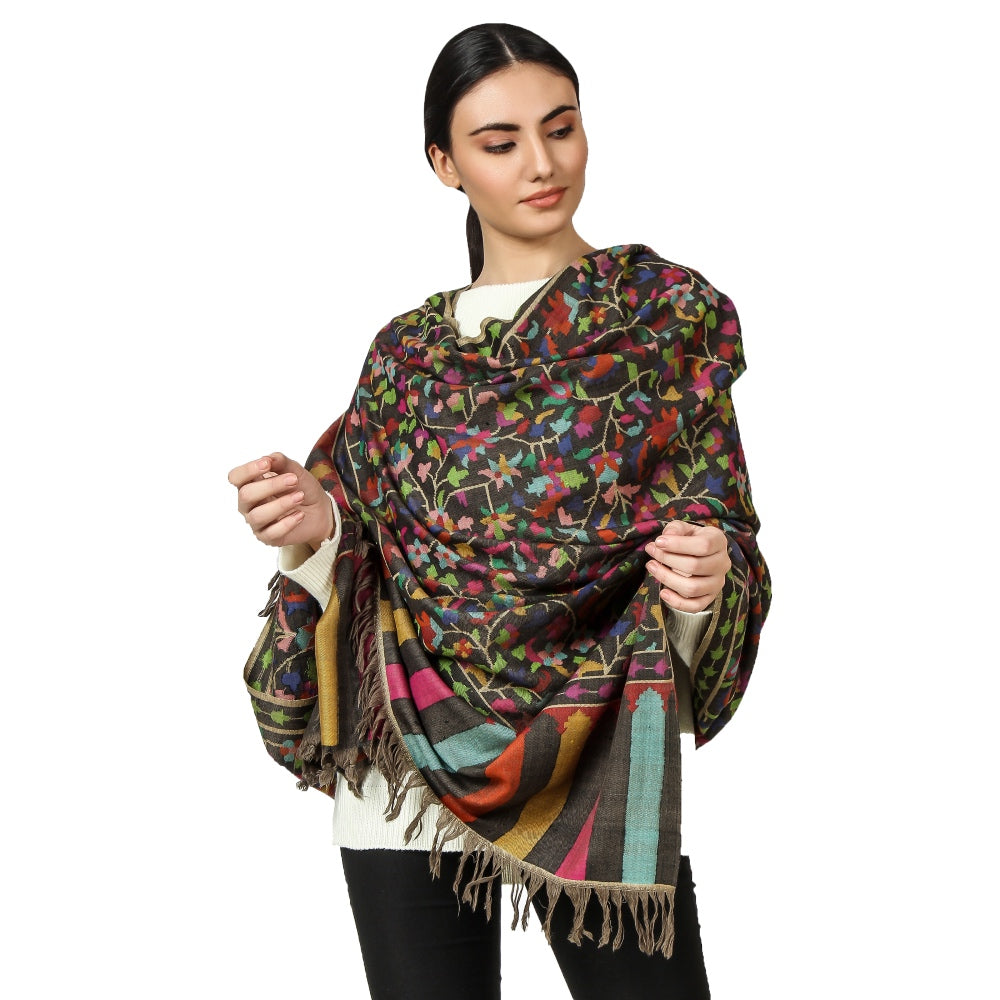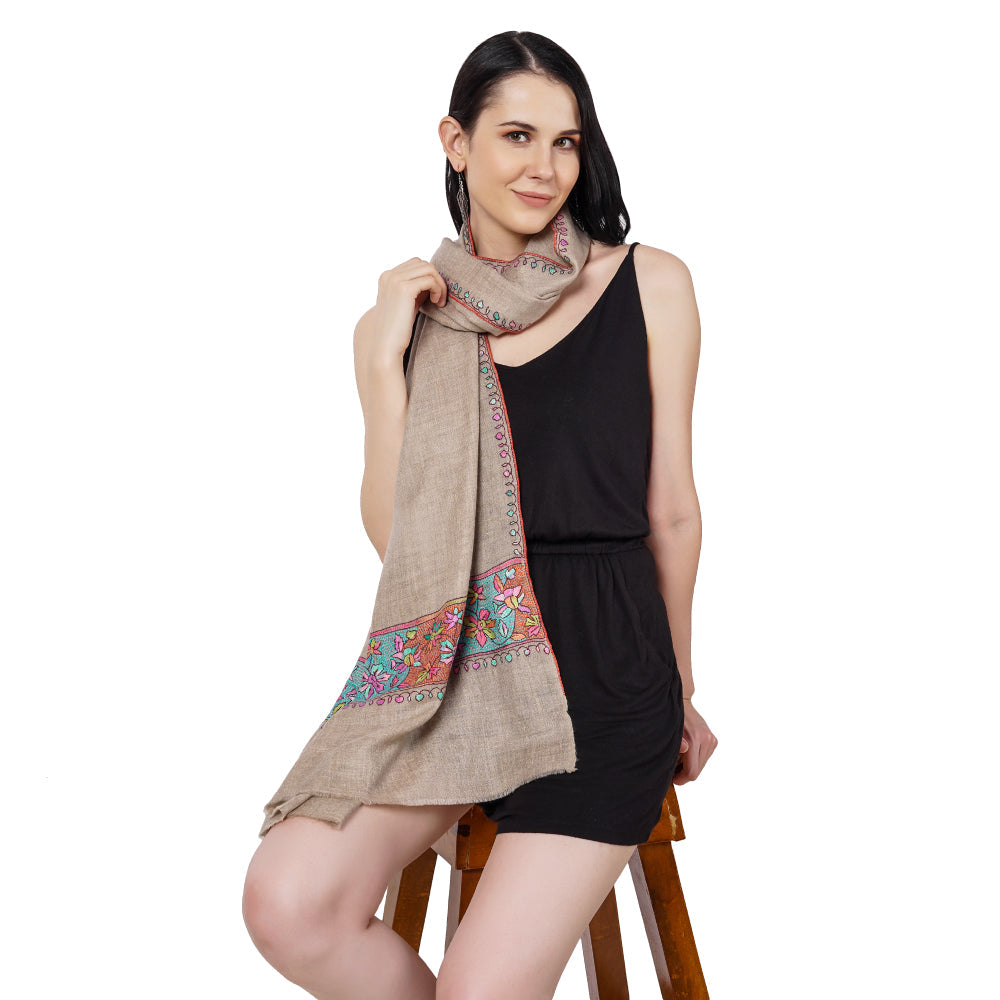
The Timeless Legacy of Pure Pashmina: 500 Years of Elegance.
Share
Few fabrics in the world can claim the legacy, elegance, and artistry that Pure Pashmina embodies. For over 500 years, Pashmina has transcended borders, cultures, and centuries, remaining a symbol of luxury, refinement, and timeless fashion. From its Persian origins to its celebrated status in Kashmir, Pure Pashmina’s journey is a story of craftsmanship, heritage, and enduring appeal.
The Origins: From Persia to the Himalayas
Pashmina’s history begins in Persia, where its name is derived from the Persian word “Pashm,” meaning “soft gold” or “fine wool.” This exquisite material was treasured by Persian royalty and nobility, revered for its unmatched softness and warmth. Persian traders and travelers introduced this luxurious fabric to the Himalayan regions centuries ago, where it found fertile ground to flourish.
In the high-altitude regions of Ladakh, the Changthangi goats—known for their fine undercoat—became the primary source of Pashmina wool. Local artisans in Kashmir embraced this material and transformed it into shawls and wraps that gained worldwide fame. The combination of Persian influence and Himalayan craftsmanship gave rise to the unique identity of Pure Pashmina as we know it today.

The Role of Pashmina in History
Throughout its 500-year journey, Pashmina has played a significant role in the annals of fashion and culture. During the Mughal era, it became a coveted item in royal courts. Emperors like Akbar were known to prize Kashmiri Pashmina shawls, often commissioning bespoke pieces adorned with intricate embroidery.
As global trade expanded in the 18th and 19th centuries, Pashmina found its way to Europe, where it became a symbol of status and sophistication among aristocracy. Napoleon Bonaparte is said to have gifted Pashmina shawls to his wife, Josephine, who famously owned an extensive collection. Her admiration for these shawls helped popularize them in European fashion, further cementing their reputation as a luxury item.

The Craftsmanship: Timeless Techniques
One of the reasons Pure Pashmina has endured for centuries is the unparalleled craftsmanship involved in its creation. The process remains largely unchanged, preserving the authenticity and heritage of this fine fabric. Artisans hand-spin the delicate Pashmina wool into threads, a task requiring immense skill and patience. The threads are then woven on traditional wooden looms, often taking weeks or months to complete a single shawl.
Adding to the allure are the intricate embroidery techniques such as Sozni, Tilla, and Aari work. These embellishments are meticulously crafted by hand, with designs ranging from floral motifs to paisley patterns. Each piece is a testament to the dedication and artistry of Kashmiri weavers, who pass down their skills through generations.

Pashmina in Modern Fashion
Despite its centuries-old heritage, Pure Pashmina continues to be a cornerstone of luxury fashion. Designers around the world incorporate Pashmina into their collections, celebrating its timeless appeal and unmatched versatility. From classic shawls and scarves to contemporary wraps and stoles, Pashmina adapts effortlessly to modern styles while retaining its essence.

Moreover, the sustainable and artisanal nature of Pashmina resonates with today’s conscious consumers. Its eco-friendly production methods and emphasis on ethical craftsmanship make it a desirable choice for those seeking quality and authenticity in their wardrobes.
Why Pure Pashmina is a Timeless Investment
Pure Pashmina is more than a fabric; it is a legacy. Each piece represents the culmination of centuries of tradition, culture, and artistry. Its exceptional softness, durability, and intricate designs make it a treasure that transcends fleeting fashion trends.
Owning a Pashmina shawl is akin to owning a piece of history. It is an investment in heritage, sustainability, and unparalleled craftsmanship. Whether passed down as a family heirloom or cherished as a personal luxury, Pure Pashmina remains a testament to timeless fashion.
Conclusion
For 500 years, Pure Pashmina has captured the hearts of royals, fashion enthusiasts, and artisans alike. Its journey from the Persian courts to the Himalayan valleys and global fashion runways is a story of resilience, artistry, and elegance. As we celebrate this enduring legacy, we are reminded that Pure Pashmina is not just a fabric but a symbol of timeless beauty and tradition.
In a world of fast fashion, Pure Pashmina stands as a beacon of quality and authenticity. To own it is to embrace a piece of history and carry forward a tradition that has defined luxury for centuries. Let the story of Pure Pashmina inspire you to appreciate its remarkable journey and unparalleled charm.




